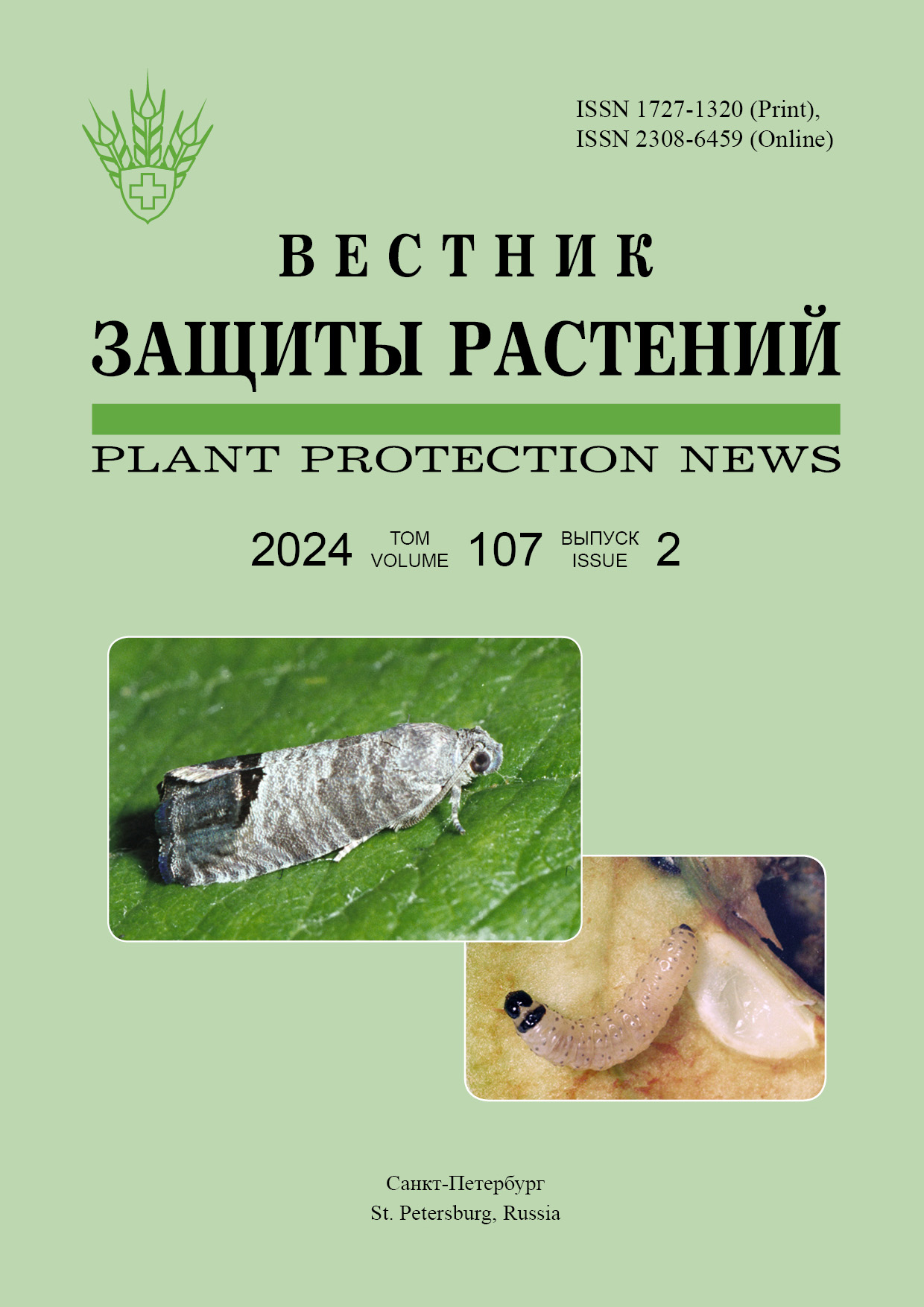Through twilight to the light: a new sight of variability in codling moth behavioral reactions
Keywords:
trap, LED, phototaxis, synthetic sex attractant, attraction, interaction, White NightsAbstract
The codling moth, Cydia pomonella (L.) is the most dangerous pest of orchard crops in the world. The aim of the paper is to evaluate the attractiveness of low-power UV LEDs for the codling moth, including their interactions with the synthetic sex pheromone bait, under a highly variable level of natural illumination during the season at dusk in St. Petersburg as compared to the south of Russia. Traps of two designs (adhesive Delta and container funnel-shaped Unitrap) were placed in orchards located in town Pavlovsk (St. Petersburg) and farmstead Slobodka (Krasnodar Area). The LED efficiency was significantly different in these two locations: in the former, the moths were not attracted by UV, whereas in the latter, light trapping was quite active. A positive phototaxic reaction of moths in St. Petersburg was absent both during the White Nights and in the subsequent period, i.e. independently of illumination level at dusk. In both locations, no increase in the catch of codling moth adults with pheromone traps was recorded after they were supplemented with UV LEDs. Moreover, when Delta traps were used in Slobodka, a highly reliable antagonism of light vs pheromone bait was observed. The results are discussed using extensive literature data on insect phototaxis, codling moth behavior, its ecological plasticity and the ability to adapt to local habitats, which allows assessing the prospects for further research. In addition, an original algorithm is demonstrated for calculating the beginning and end of White Nights period for entomological objects which is of interest in terms of conducting research with insects at high latitudes.



